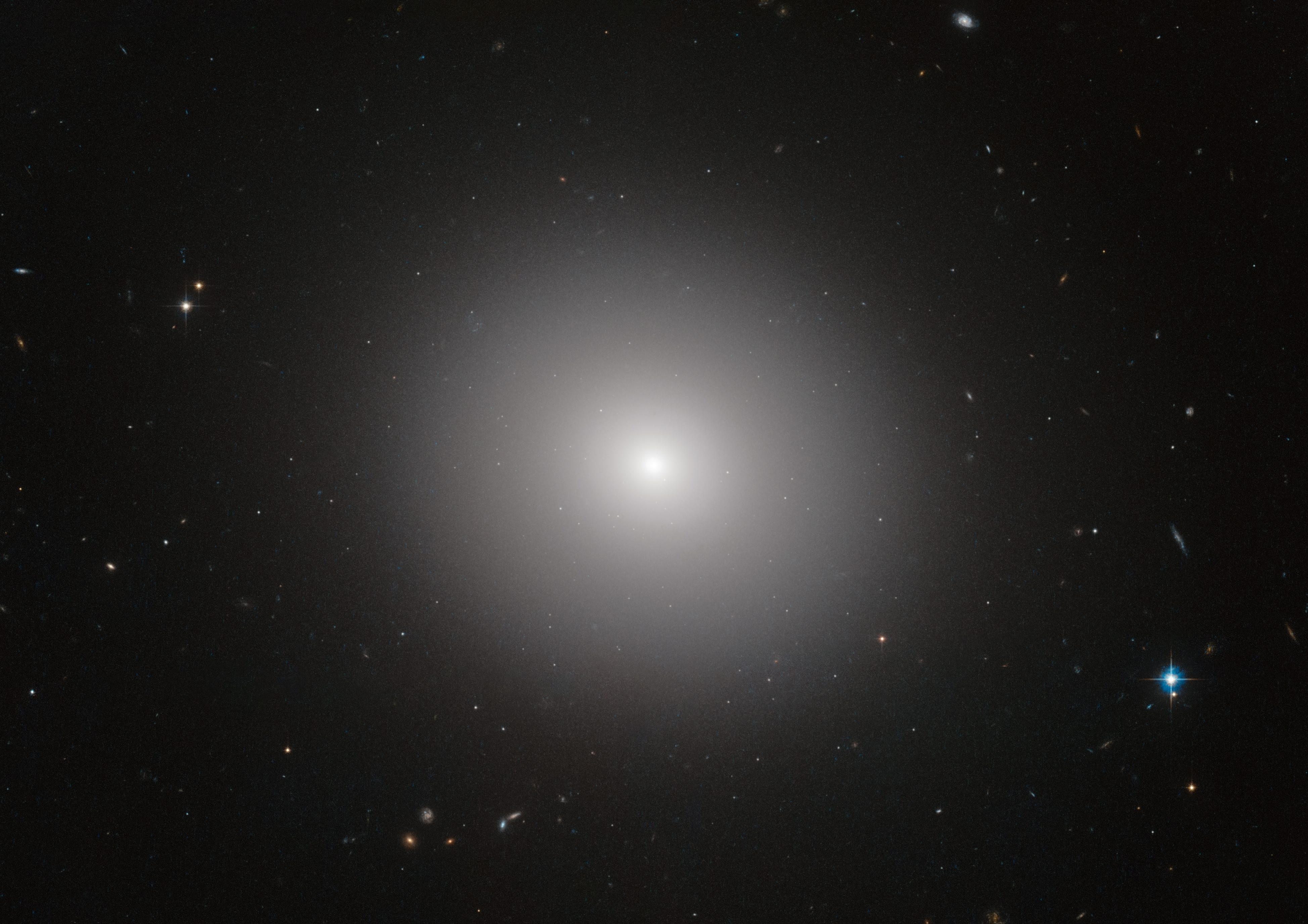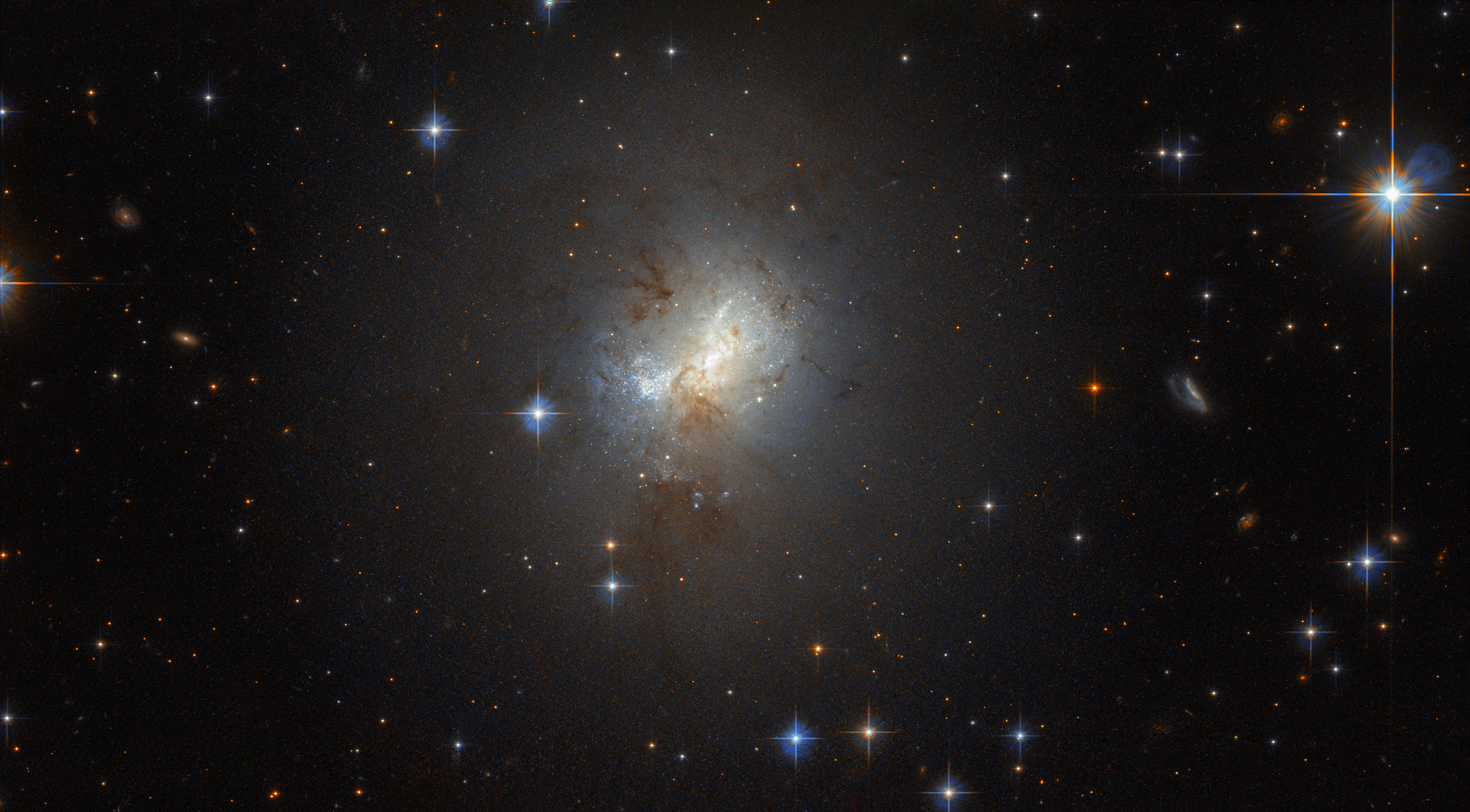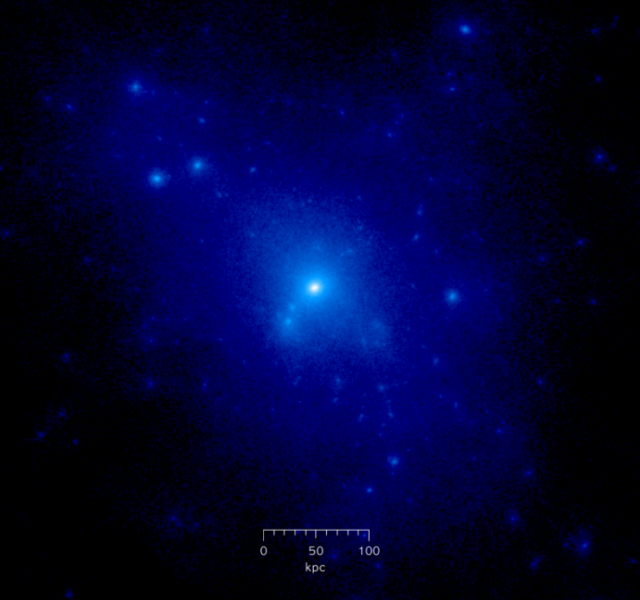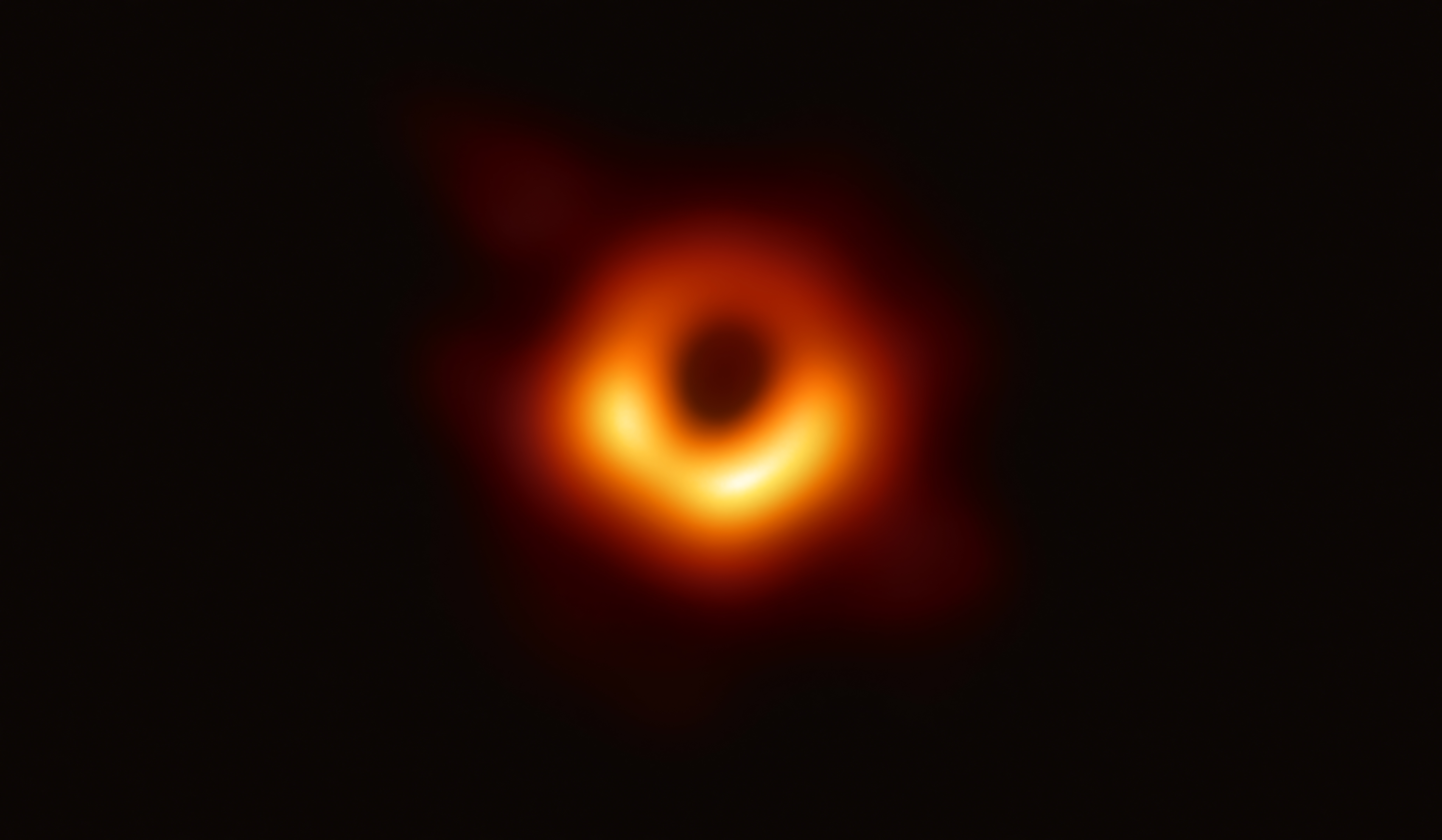|
Sérsic Profile
The Sérsic profile (or Sérsic model or Sérsic's law) is a mathematical function that describes how the Radiance#Intensity, intensity I of a galaxy varies with distance R from its center. It is a generalization of de Vaucouleurs' law. José Luis Sérsic first published his law in 1963. Definition The Sérsic profile has the form \ln I(R) = \ln I_ - k R^ , or I(R) = I_0 \exp, where I_ is the surface brightness, intensity at R = 0. The parameter n, called the "Sérsic index," controls the degree of curvature of the profile (see figure). The smaller the value of n, the less centrally concentrated the profile is and the shallower (steeper) the logarithmic slope at small (large) radii is. The equation for describing this is: \frac = -(k/n)\ R^ . Today, it is more common to write this function in terms of the half-light radius, Re, and the intensity at that radius, Ie, such that : I(R)=I_e \exp\left\, where b_n is approximately 2n-1/3 for n>8. b_n can also be approximated t ... [...More Info...] [...Related Items...] OR: [Wikipedia] [Google] [Baidu] |
Radiance
In radiometry, radiance is the radiant flux emitted, reflected, transmitted or received by a given surface, per unit solid angle per unit projected area. Radiance is used to characterize diffuse emission and reflection of electromagnetic radiation, and to quantify emission of neutrinos and other particles. The SI unit of radiance is the watt per steradian per square metre (). It is a ''directional'' quantity: the radiance of a surface depends on the direction from which it is being observed. The related quantity spectral radiance is the radiance of a surface per unit frequency or wavelength, depending on whether the spectrum is taken as a function of frequency or of wavelength. Historically, radiance was called "intensity" and spectral radiance was called "specific intensity". Many fields still use this nomenclature. It is especially dominant in heat transfer, astrophysics and astronomy. "Intensity" has many other meanings in physics, with the most common being power per unit ... [...More Info...] [...Related Items...] OR: [Wikipedia] [Google] [Baidu] |
Dwarf Elliptical Galaxies
Dwarf elliptical galaxies (dEs) are elliptical galaxy, elliptical galaxies that are smaller than ordinary elliptical galaxy, galaxies. They are quite common in galaxy groups and galaxy cluster, clusters, and are usually companions to other galaxies. Examples "Dwarf elliptical" galaxies should not be confused with the rare "compact elliptical" galaxy class, of which Messier 32, M32, a satellite of the Andromeda Galaxy, is the prototype. In 1944 Walter Baade confirmed dwarf ellipticals NGC 147 and NGC 185 as members of the Local Group by resolving them into individual stars, thanks to their relatively little distance. In the 1950s, dEs were also discovered in the nearby Fornax Cluster, Fornax and Virgo Cluster, Virgo clusters. Relation to other elliptical galaxy types Dwarf elliptical galaxies have blue absolute magnitudes within the range fainter than ordinary elliptical galaxies. The surface brightness profiles of ordinary elliptical galaxy, elliptical galaxies was formerly ... [...More Info...] [...Related Items...] OR: [Wikipedia] [Google] [Baidu] |
Galactic Bulge
In astronomy, a galactic bulge (or simply bulge) is a tightly packed group of stars within a larger star formation. The term almost exclusively refers to the group of stars found near the center of most spiral galaxies (see ''galactic spheroid''). Bulges were historically thought to be elliptical galaxies that happened to have a disk of stars around them, but high-resolution images using the Hubble Space Telescope have revealed that many bulges lie at the heart of a spiral galaxy. It is now thought that there are at least two types of bulges: bulges that are like ellipticals and bulges that are like spiral galaxies. Classical bulges Bulges that have properties similar to those of elliptical galaxies are often called "classical bulges" due to their similarity to the historic view of bulges. These bulges are composed primarily of stars that are older, Population II stars, and hence have a reddish hue (see stellar evolution). These stars are also in orbits that are essentiall ... [...More Info...] [...Related Items...] OR: [Wikipedia] [Google] [Baidu] |
Elliptical Galaxy
An elliptical galaxy is a type of galaxy with an approximately ellipsoidal shape and a smooth, nearly featureless image. They are one of the three main galaxy morphological classification, classes of galaxy described by Edwin Hubble in his Hubble sequence#Physical significance, Hubble sequence and 1936 work ''The Realm of the Nebulae'', with their intermediate scale disks, a subset of the "early-type" galaxy population. Most elliptical galaxies are composed of older, stellar evolution#Low-mass stars, low-mass stars, with a sparse interstellar medium, and they tend to be surrounded by large numbers of globular clusters. Star formation activity in elliptical galaxies is typically minimal; they may, however, undergo brief periods of star formation when merging with other galaxies. Elliptical galaxies are believed to make up approximately 10–15% of galaxies in the Virgo Supercluster, and they are not the dominant type of galaxy in the universe overall. They are preferentially fou ... [...More Info...] [...Related Items...] OR: [Wikipedia] [Google] [Baidu] |
Einasto Profile
The Einasto profile (or Einasto model) is a mathematical function that describes how the density \rho of a spherical stellar system varies with distance r from its center. Jaan Einasto introduced his model at a 1963 conference in Alma-Ata, Kazakhstan. The Einasto profile possesses a power law logarithmic slope of the form: \gamma(r) \equiv -\frac \propto r^ which can be rearranged to give \rho(r) \propto \exp . The parameter \alpha controls the degree of curvature of the profile. This can be seen by computing the slope on a log-log plot: \frac \propto -r^ . The larger \alpha, the more rapidly the slope varies with radius (see figure). Einasto's law can be described as a generalization of a power law, \rho\propto r^, which has a constant slope on a log-log plot. Einasto's model has the same mathematical form as Sersic's law, which is used to describe the surface brightness (i.e. projected density) profile of galaxies, except that the Einasto model describes a spherically symmet ... [...More Info...] [...Related Items...] OR: [Wikipedia] [Google] [Baidu] |
Galaxy Nucleus
A galaxy is a system of stars, stellar remnants, interstellar gas, dust, and dark matter bound together by gravity. The word is derived from the Greek ' (), literally 'milky', a reference to the Milky Way galaxy that contains the Solar System. Galaxies, averaging an estimated 100 million stars, range in size from dwarfs with less than a thousand stars, to the largest galaxies known – supergiants with one hundred trillion stars, each orbiting its galaxy's centre of mass. Most of the mass in a typical galaxy is in the form of dark matter, with only a few per cent of that mass visible in the form of stars and nebulae. Supermassive black holes are a common feature at the centres of galaxies. Galaxies are categorised according to their visual morphology as elliptical, spiral, or irregular. The Milky Way is an example of a spiral galaxy. It is estimated that there are between 200 billion () to 2 trillion galaxies in the observable universe. Most galaxies are 1,00 ... [...More Info...] [...Related Items...] OR: [Wikipedia] [Google] [Baidu] |
Bulge (astronomy)
In astronomy, a galactic bulge (or simply bulge) is a tightly packed group of stars within a larger star formation. The term almost exclusively refers to the group of stars found near the Galaxy#Center, center of most spiral galaxy, spiral galaxies (see ''galactic spheroid''). Bulges were historically thought to be elliptical galaxies that happened to have a Galactic disc, disk of stars around them, but high-resolution images using the Hubble Space Telescope have revealed that many bulges lie at the heart of a spiral galaxy. It is now thought that there are at least two types of bulges: bulges that are like ellipticals and bulges that are like spiral galaxies. Classical bulges Bulges that have properties similar to those of elliptical galaxies are often called "classical bulges" due to their similarity to the historic view of bulges. These bulges are composed primarily of stars that are older, Population II, Population II stars, and hence have a reddish hue (see stellar evolu ... [...More Info...] [...Related Items...] OR: [Wikipedia] [Google] [Baidu] |
Dwarf Elliptical Galaxies
Dwarf elliptical galaxies (dEs) are elliptical galaxy, elliptical galaxies that are smaller than ordinary elliptical galaxy, galaxies. They are quite common in galaxy groups and galaxy cluster, clusters, and are usually companions to other galaxies. Examples "Dwarf elliptical" galaxies should not be confused with the rare "compact elliptical" galaxy class, of which Messier 32, M32, a satellite of the Andromeda Galaxy, is the prototype. In 1944 Walter Baade confirmed dwarf ellipticals NGC 147 and NGC 185 as members of the Local Group by resolving them into individual stars, thanks to their relatively little distance. In the 1950s, dEs were also discovered in the nearby Fornax Cluster, Fornax and Virgo Cluster, Virgo clusters. Relation to other elliptical galaxy types Dwarf elliptical galaxies have blue absolute magnitudes within the range fainter than ordinary elliptical galaxies. The surface brightness profiles of ordinary elliptical galaxy, elliptical galaxies was formerly ... [...More Info...] [...Related Items...] OR: [Wikipedia] [Google] [Baidu] |
Dark Matter Halo
In modern models of physical cosmology, a dark matter halo is a basic unit of cosmological structure. It is a hypothetical region that has decoupled from cosmic expansion and contains gravitationally bound matter. A single dark matter halo may contain multiple virialized clumps of dark matter bound together by gravity, known as subhalos. Modern cosmological models, such as ΛCDM, propose that dark matter halos and subhalos may contain galaxies. The dark matter halo of a galaxy envelops the galactic disc and extends well beyond the edge of the visible galaxy. Thought to consist of dark matter, halos have not been observed directly. Their existence is inferred through observations of their effects on the motions of stars and gas in galaxies and gravitational lensing. Dark matter halos play a key role in current models of galaxy formation and evolution. Theories that attempt to explain the nature of dark matter halos with varying degrees of success include cold dark matter (C ... [...More Info...] [...Related Items...] OR: [Wikipedia] [Google] [Baidu] |
Supermassive Black Hole
A supermassive black hole (SMBH or sometimes SBH) is the largest type of black hole, with its mass being on the order of hundreds of thousands, or millions to billions, of times the mass of the Sun (). Black holes are a class of astronomical objects that have undergone gravitational collapse, leaving behind spheroidal regions of space from which nothing can escape, including light. Observational evidence indicates that almost every large galaxy has a supermassive black hole at its center. For example, the Milky Way galaxy has a supermassive black hole at its center, corresponding to the radio source Sagittarius A*. Accretion of interstellar gas onto supermassive black holes is the process responsible for powering active galactic nuclei (AGNs) and quasars. Two supermassive black holes have been directly imaged by the Event Horizon Telescope: the black hole in the giant elliptical galaxy Messier 87 and the black hole at the Milky Way's center (Sagittarius A*). Descr ... [...More Info...] [...Related Items...] OR: [Wikipedia] [Google] [Baidu] |
Hubble Type
The Hubble sequence is a morphological classification scheme for galaxies published by Edwin Hubble in 1926. It is often colloquially known as the Hubble tuning-fork diagram because the shape in which it is traditionally represented resembles a tuning fork. It was invented by John Henry Reynolds and Sir James Jeans. The tuning fork scheme divided regular galaxies into three broad classes – ellipticals, lenticulars and spirals – based on their visual appearance (originally on photographic plates). A fourth class contains galaxies with an irregular appearance. The Hubble sequence is the most commonly used system for classifying galaxies, both in professional astronomical research and in amateur astronomy. Classes of galaxies Ellipticals On the left (in the sense that the sequence is usually drawn) lie the ellipticals. Elliptical galaxies have relatively smooth, featureless light distributions and appear as ellipses in photographic images. They are denoted by the lette ... [...More Info...] [...Related Items...] OR: [Wikipedia] [Google] [Baidu] |








